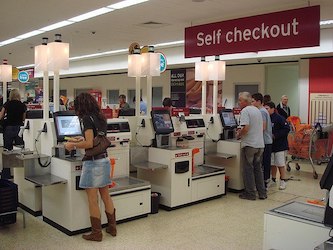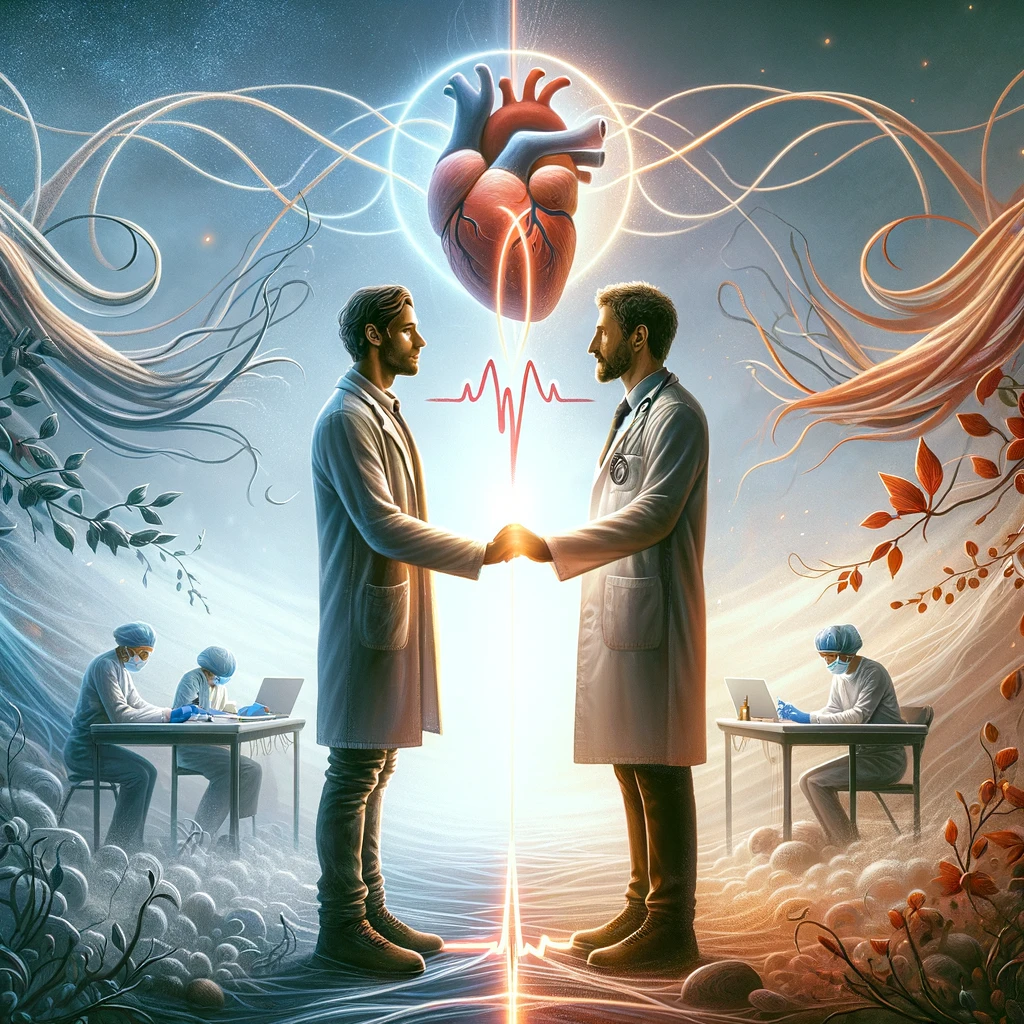Scientists have created electronic noses that can sniff out different smells. These high-tech sensors are really useful for food safety because they can detect harmful bacteria like salmonella and E. Coli. Each type of bacteria gives off a special smell, and the electronic nose can pick up on it. It then sends the information to a computer program that compares it to a database and tells you if the food is contaminated or not.
One company called Sensifi has made electronic noses that can be used right where the food is made. They give you results in less than an hour, which is a lot faster than sending samples to a lab and waiting for days. Sensifi wants to make their machines affordable and charge a subscription fee to use them.
Food poisoning is a big problem all over the world, with millions of people getting sick and thousands dying each year. Romaine lettuce has been a big issue lately. As our food gets more industrialized, it’s easier for bad bacteria to get in. A German company called NTT Data Business Solutions is using coffee to teach their electronic noses. They expose the sensors to different types of coffee so the computer program can learn what fresh and good-quality coffee smells like.
Even though these electronic noses are really cool, some experts think they might be too expensive for a lot of food companies. It would cost a lot of money to set up a worldwide network of these detectors, and it might not make financial sense for many businesses. It would also be hard to make the electronic noses work perfectly in every single place. But there are entrepreneurs who aren’t discouraged and have made sensors that are thousands of times more sensitive than a dog’s nose. These sensors can be used for lots of things, like making sure food is good quality, diagnosing diseases, and checking the environment.
Original news source: The electronic noses designed to prevent food poisoning (BBC)
Listen
Slow
Normal
Fast
Group or Classroom Activities
Warm-up Activities:
– Charades
Instructions: Divide the class into teams. Give each team a set of vocabulary words related to the article (e.g. bacteria, food safety, electronic nose). One student from each team will come to the front of the class and act out the word without speaking. The team members must guess the word within a certain time limit. The team with the most correct guesses wins.
– News Summary
Instructions: In pairs or small groups, have the students summarize the main points of the article. They can take turns speaking or write down their summaries. Afterward, have each group share their summaries with the class and discuss any differences or similarities in their interpretations.
– Opinion Poll
Instructions: Create a list of statements related to the article (e.g. “Electronic noses are a necessary tool for food safety.”). Have the students walk around the classroom and ask their classmates for their opinions on each statement. They can record their classmates’ responses on a chart or worksheet. Afterward, have a class discussion and ask students to share their findings and explain their own opinions.
– Vocabulary Pictionary
Instructions: Divide the class into teams. Give each team a set of vocabulary words from the article (e.g. salmonella, E. Coli, contaminants). One student from each team will come to the front of the class and draw a picture to represent the word. Their team members must guess the word within a certain time limit. The team with the most correct guesses wins.
– Pros and Cons
Instructions: Divide the class into small groups. Assign each group a topic related to the article (e.g. the benefits and drawbacks of using electronic noses for food safety). Have each group brainstorm and discuss the pros and cons of their assigned topic. Then, have each group share their findings with the class and engage in a class discussion to compare and contrast the different perspectives.
Comprehension Questions:
1. What are electronic noses used for in terms of food safety?
2. How do electronic noses detect harmful bacteria in food?
3. How long does it take for Sensifi’s electronic noses to give results?
4. Why is food poisoning a big problem around the world?
5. How is NTT Data Business Solutions teaching their electronic noses to recognize good-quality coffee?
6. Why do some experts think electronic noses might be too expensive for food companies?
7. What are some other uses for the highly sensitive sensors made by entrepreneurs?
8. Can you think of any other ways electronic noses could be useful in everyday life?
Go to answers ⇩
Listen and Fill in the Gaps:
Scientists have (1)______ electronic noses that can sniff out different (2)______. These high-tech sensors are really useful for food safety because they can detect harmful bacteria like (3)______ and E. Coli. Each type of bacteria gives off a (4)______ smell, and the electronic nose can pick up on it. It then sends the information to a computer program that compares it to a database and tells you if the food is contaminated or not.
One company called Sensifi has made (5)______ noses that can be used right where the food is made. They give you results in less than an hour, which is a lot faster than sending (6)______ to a lab and waiting for days. Sensifi wants to make their machines affordable and charge a subscription fee to use them.
Food poisoning is a big problem all over the world, with millions of (7)______ getting sick and (8)______ dying each year. Romaine lettuce has been a big issue lately. As our food gets more industrialized, it’s (9)______ for bad bacteria to get in. A German (10)______ called NTT Data (11)______ Solutions is using coffee to teach their electronic noses. They expose the sensors to different types of coffee so the (12)______ program can learn what fresh and good-quality coffee smells like.
Even though these electronic noses are really cool, some experts think they might be too expensive for a lot of food companies. It would cost a lot of money to set up a worldwide network of these detectors, and it might not make financial sense for many (13)______. It would also be hard to make the electronic noses work perfectly in every (14)______ place. But there are entrepreneurs who aren’t (15)______ and have made sensors that are thousands of times more sensitive than a dog’s nose. These sensors can be used for lots of things, like making sure food is good quality, diagnosing diseases, and checking the (16)______.
Go to answers ⇩
Discussion Questions:
Students can ask a partner these questions, or discuss them as a group.
1. What is an electronic nose and what is it used for?
2. How do electronic noses detect harmful bacteria in food?
3. How long does it take for electronic noses to give results compared to sending samples to a lab?
4. Why do you think electronic noses can be useful in ensuring food safety?
5. Do you think electronic noses should be affordable for food companies? Why or why not?
6. How do you think electronic noses could help in preventing food poisoning?
7. Would you feel more confident eating food that has been tested by an electronic nose? Why or why not?
8. Do you like the idea of using coffee to teach electronic noses? Why or why not?
9. How do you think electronic noses could be used in diagnosing diseases?
10. Do you think it is worth the cost to set up a worldwide network of electronic nose detectors? Why or why not?
11. Why do you think it would be challenging to make electronic noses work perfectly in every single place?
12. How do you think sensors that are thousands of times more sensitive than a dog’s nose could be used in checking the environment?
13. What other applications can you think of for electronic noses, besides food safety?
14. How would you feel if you found out that the food you ate was tested by an electronic nose?
15. Do you think electronic noses will become more common in the future? Why or why not?
Individual Activities
Vocabulary Meanings:
Match each word to its meaning.
Words:
1. electronic
2. bacteria
3. sensors
4. database
5. subscription
6. industrialized
7. entrepreneurs
8. sensitive
Meanings:
(a) Devices that can detect and measure things
(b) People who start and run their own businesses
(c) Tiny organisms that can make you sick
(d) Able to detect very small changes or differences
(e) Made more mechanical and less natural
(f) Related to technology and electricity
(g) A regular payment to use a service
(h) A collection of information stored on a computer
Go to answers ⇩
Multiple Choice Questions:
1. What can electronic noses detect?
(a) Harmful bacteria
(b) Harmful viruses
(c) Harmful fungi
(d) Harmful parasites
2. How do electronic noses detect harmful bacteria?
(a) By analyzing the color of the food
(b) By measuring the temperature of the food
(c) By picking up on the special smell they give off
(d) By listening to the sound the food makes
3. What advantage do electronic noses have over sending samples to a lab?
(a) They are cheaper to use
(b) They can detect multiple types of bacteria at once
(c) They are more accurate in detecting contamination
(d) They provide results in less than an hour
4. Which company has made electronic noses that can be used where the food is made?
(a) Sensifi
(b) NTT Data Business Solutions
(c) Romaine Lettuce
(d) Salmonella and E. Coli
5. How does NTT Data Business Solutions teach their electronic noses to detect fresh and good-quality coffee?
(a) By exposing the sensors to different types of tea
(b) By exposing the sensors to different types of spices
(c) By exposing the sensors to different types of coffee
(d) By exposing the sensors to different types of fruits
6. What is one concern experts have about the use of electronic noses in food companies?
(a) They might not be sensitive enough to detect contamination
(b) They might be too expensive for many businesses
(c) They might take too long to provide results
(d) They might not be able to detect all types of bacteria
7. What is one potential use of the highly sensitive sensors developed by entrepreneurs?
(a) Diagnosing diseases
(b) Making sure food is good quality
(c) Checking the environment
(d) All of the above
8. What is one disadvantage of setting up a worldwide network of electronic nose detectors?
(a) It would be too time-consuming
(b) It would be too difficult to train the sensors
(c) It would be too inaccurate in detecting contamination
(d) It would be too expensive
Go to answers ⇩
True or False Questions:
1. Despite the potential challenges, entrepreneurs have developed sensors that are thousands of times more sensitive than a dog’s nose, with applications in food quality assurance, disease diagnosis, and environmental monitoring.
2. NTT Data Business Solutions, a German company, is not using coffee to train their electronic noses to recognize different smells.
3. Sensifi, a company, has not created electronic noses that can be used in food production areas and provide results in less than an hour.
4. Scientists have not developed electronic noses that can detect different smells, including harmful bacteria like salmonella and E. Coli.
5. Some experts believe that these electronic noses may be too expensive for many food companies to implement on a large scale.
6. Food poisoning is not a global problem, with millions of people falling ill and thousands dying each year.
7. Sensifi aims to make their machines affordable and charge a subscription fee for their use.
8. These electronic noses send information to a computer program that compares it to a database to determine if the food is contaminated or not.
Go to answers ⇩
Write a Summary:
Write a summary of this news article in two sentences.
Check your writing now with the best free AI for English writing!
Writing Questions:
Answer the following questions. Write as much as you can for each answer.
Check your answers with our free English writing assistant!
1. What are electronic noses used for in relation to food safety?
2. How do electronic noses detect harmful bacteria in food?
3. What is one advantage of using electronic noses instead of sending samples to a lab?
4. How is Sensifi making their electronic noses more accessible to food companies?
5. Why is food poisoning becoming a bigger problem as our food becomes more industrialized?
Answers
Comprehension Question Answers:
1. What are electronic noses used for in terms of food safety?
Electronic noses are used to detect harmful bacteria in food and ensure its safety.
2. How do electronic noses detect harmful bacteria in food?
Electronic noses detect harmful bacteria in food by picking up on the special smells that each type of bacteria gives off. The information is then compared to a database to determine if the food is contaminated or not.
3. How long does it take for Sensifi’s electronic noses to give results?
Sensifi’s electronic noses give results in less than an hour, which is much faster than sending samples to a lab and waiting for days.
4. Why is food poisoning a big problem around the world?
Food poisoning is a big problem around the world because as our food becomes more industrialized, it becomes easier for bad bacteria to contaminate it. This can lead to millions of people getting sick and thousands dying each year.
5. How is NTT Data Business Solutions teaching their electronic noses to recognize good-quality coffee?
NTT Data Business Solutions is teaching their electronic noses to recognize good-quality coffee by exposing the sensors to different types of coffee. This allows the computer program to learn what fresh and good-quality coffee smells like.
6. Why do some experts think electronic noses might be too expensive for food companies?
Some experts think electronic noses might be too expensive for food companies because it would cost a lot of money to set up a worldwide network of these detectors. Additionally, it might not make financial sense for many businesses, and it could be challenging to make the electronic noses work perfectly in every single place.
7. What are some other uses for the highly sensitive sensors made by entrepreneurs?
The highly sensitive sensors made by entrepreneurs can be used for various purposes, such as ensuring food quality, diagnosing diseases, and monitoring the environment.
8. Can you think of any other ways electronic noses could be useful in everyday life?
Electronic noses could be useful in everyday life for detecting gas leaks, identifying spoiled food in the fridge, and even helping people with allergies by detecting allergens in the air.
Go back to questions ⇧
Listen and Fill in the Gaps Answers:
(1) created
(2) smells
(3) salmonella
(4) special
(5) electronic
(6) samples
(7) people
(8) thousands
(9) easier
(10) company
(11) Business
(12) computer
(13) businesses
(14) single
(15) discouraged
(16) environment
Go back to questions ⇧
Vocabulary Meanings Answers:
1. electronic
Answer: (f) Related to technology and electricity
2. bacteria
Answer: (c) Tiny organisms that can make you sick
3. sensors
Answer: (a) Devices that can detect and measure things
4. database
Answer: (h) A collection of information stored on a computer
5. subscription
Answer: (g) A regular payment to use a service
6. industrialized
Answer: (e) Made more mechanical and less natural
7. entrepreneurs
Answer: (b) People who start and run their own businesses
8. sensitive
Answer: (d) Able to detect very small changes or differences
Go back to questions ⇧
Multiple Choice Answers:
1. What can electronic noses detect?
Answer: (a) Harmful bacteria
2. How do electronic noses detect harmful bacteria?
Answer: (c) By picking up on the special smell they give off
3. What advantage do electronic noses have over sending samples to a lab?
Answer: (d) They provide results in less than an hour
4. Which company has made electronic noses that can be used where the food is made?
Answer: (a) Sensifi
5. How does NTT Data Business Solutions teach their electronic noses to detect fresh and good-quality coffee?
Answer: (c) By exposing the sensors to different types of coffee
6. What is one concern experts have about the use of electronic noses in food companies?
Answer: (b) They might be too expensive for many businesses
7. What is one potential use of the highly sensitive sensors developed by entrepreneurs?
Answer: (b) Making sure food is good quality
8. What is one disadvantage of setting up a worldwide network of electronic nose detectors?
Answer: (d) It would be too expensive
Go back to questions ⇧
True or False Answers:
1. Despite the potential challenges, entrepreneurs have developed sensors that are thousands of times more sensitive than a dog’s nose, with applications in food quality assurance, disease diagnosis, and environmental monitoring. (Answer: True)
2. NTT Data Business Solutions, a German company, is not using coffee to train their electronic noses to recognize different smells. (Answer: False)
3. Sensifi, a company, has not created electronic noses that can be used in food production areas and provide results in less than an hour. (Answer: False)
4. Scientists have not developed electronic noses that can detect different smells, including harmful bacteria like salmonella and E. Coli. (Answer: False)
5. Some experts believe that these electronic noses may be too expensive for many food companies to implement on a large scale. (Answer: True)
6. Food poisoning is not a global problem, with millions of people falling ill and thousands dying each year. (Answer: False)
7. Sensifi aims to make their machines affordable and charge a subscription fee for their use. (Answer: True)
8. These electronic noses send information to a computer program that compares it to a database to determine if the food is contaminated or not. (Answer: True)
Go back to questions ⇧














